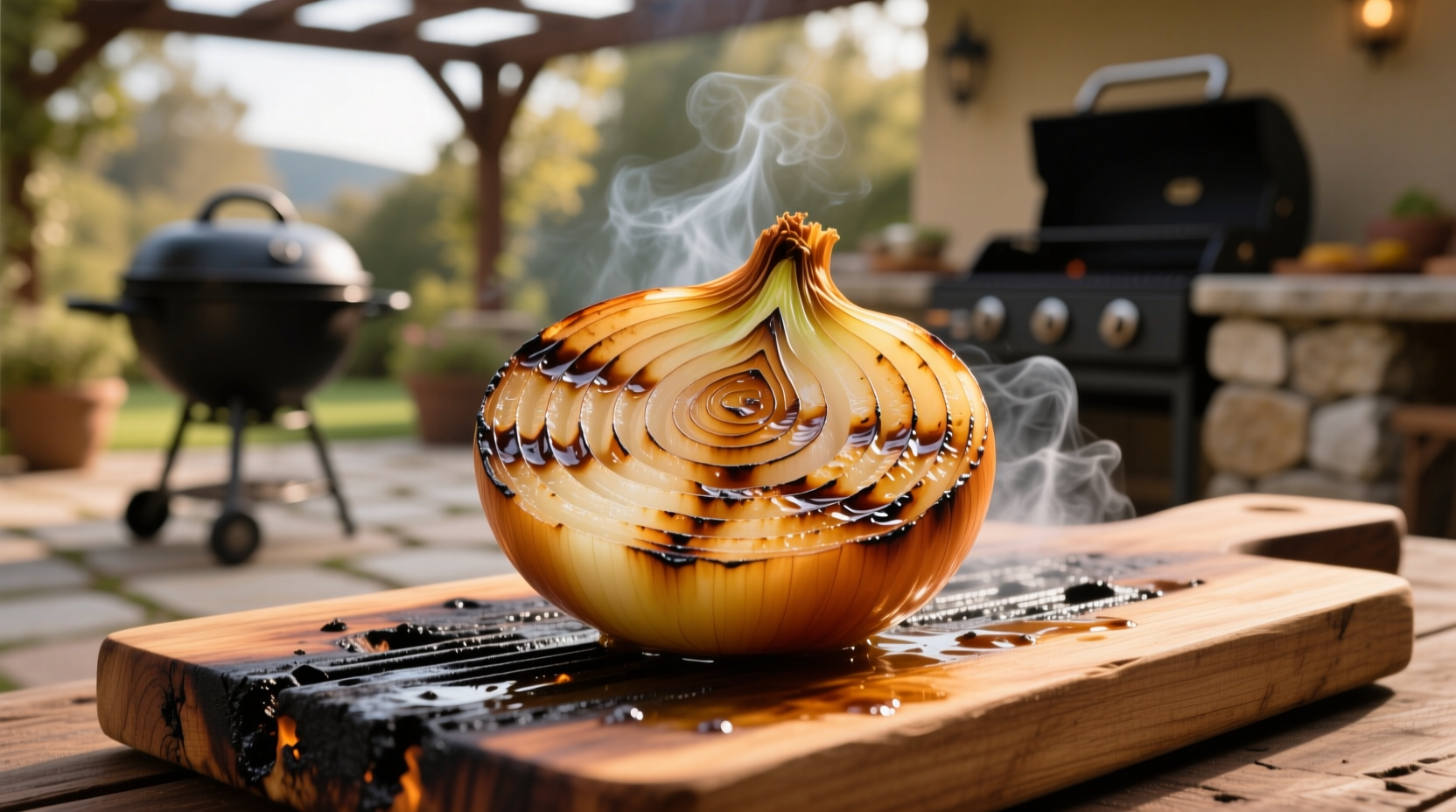
Why Grilled Onions Elevate Your Cooking Game
Grilling onions isn't just about adding flavor—it's a flavor transformation process that changes their chemical composition. When onions hit the hot grill surface (typically between 375-450°F), the Maillard reaction and caramelization work simultaneously. This dual process breaks down complex sugars while creating hundreds of new flavor compounds that raw or pan-fried onions simply can't match.
Onion Varieties: Which Work Best for Grilling
| Onion Type | Grill Suitability | Best Cooking Time | Flavor Profile After Grilling |
|---|---|---|---|
| Yellow onions | Excellent | 12-15 minutes | Rich caramel sweetness with mild tang |
| Red onions | Very Good | 10-12 minutes | Vibrant color retention with subtle berry notes |
| White onions | Good | 8-10 minutes | Clean, sharp flavor that mellows beautifully |
| Shallots | Fair | 6-8 minutes | Intense sweetness with garlic undertones |
| Green onions | Excellent | 3-4 minutes | Delicate char with fresh allium flavor |
The Evolution of Onion Grilling Techniques
Historical records from the USDA National Agricultural Library show that indigenous peoples in the Americas were grilling onions over open fires as early as 1000 BCE. Spanish explorers documented native tribes using green onions as both food and medicine, often cooking them on hot stones. The modern technique of slicing and grilling onions gained popularity in the 1950s with the backyard barbecue movement, as documented by the Smithsonian Food History Project.
Preparing Onions for Maximum Flavor Impact
Follow this professional chef-tested sequence for perfect grilled onions every time:
Step 1: Selection and Cutting
- Choose firm onions with tight skins and no soft spots
- Cut yellow and red onions pole-to-pole (not equatorially) to preserve cell structure
- Aim for 1/2-inch thick slices to prevent falling through grill grates
- For whole small onions, leave root end intact to hold layers together
Step 2: Pre-Grill Treatment
Professional kitchens use a 10-minute soak in cold water before grilling to reduce sulfur compounds that cause bitterness. For sweeter results, try a light brush of maple syrup (1 part syrup to 4 parts water) which accelerates caramelization without burning.
Step 3: Grill Setup
Set up a two-zone fire with direct heat at 400°F for searing and indirect heat at 300°F for finishing. Clean and oil grill grates thoroughly—onion sugars stick aggressively to unprepared surfaces.
When Grilled Onions Fail: Critical Context Boundaries
Despite their versatility, grilled onions have specific limitations you must recognize:
- High-moisture vegetables: Don't grill onions alongside watery vegetables like zucchini—different moisture contents create uneven cooking
- Delicate proteins: Avoid placing grilled onions directly on fish or thin chicken cutlets as the sugars can burn before protein cooks through
- Acidic components: Never add vinegar or citrus during grilling—acid prevents proper caramelization (add after cooking)
- High-heat limitations: Temperatures above 450°F cause onions to blacken before sweetening occurs
Flavor Pairing Science: What Works Best With Grilled Onions
Food chemistry research from the Institute of Food Technologists reveals why certain pairings work:
- Beef and lamb: Grilled onions' sulfur compounds bind with meat's iron content, creating complex flavor molecules
- Cheeses: The sweetness balances salty cheeses like feta or blue cheese (try our grilled onion and goat cheese salad)
- Acidic finishes: A splash of balsamic vinegar after cooking creates flavor layering without preventing caramelization
- Spice rubs: Paprika and cumin applied before grilling create additional Maillard reaction products
Storage and Usage Tips for Leftover Grilled Onions
Store cooled grilled onions in airtight containers for up to 5 days. For longer storage, freeze in single layers before transferring to freezer bags—they'll keep for 3 months. When reheating, use a dry skillet rather than microwave to preserve texture. Leftover grilled onions work exceptionally well in:
- Omelets and frittatas (adds sweetness without overpowering eggs)
- Pizza toppings (place under cheese to prevent drying)
- Grain bowls (toss with warm quinoa or farro)
- Compound butters (blend with softened butter for steak topping)











 浙公网安备
33010002000092号
浙公网安备
33010002000092号 浙B2-20120091-4
浙B2-20120091-4